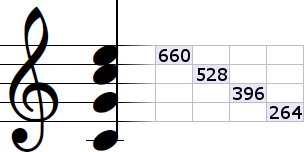|
is a tool that adds a new dimension to computer music:
it re-introduces dynamic intonation, a key feature of most acoustic music instruments, from string and wind to the singing voice. Dynamic intonation ─ i.e. adapting the musical pitch according to the harmonic context ─ is a key feature of most acoustic music. Vocalists and musicians playing wind and string instruments spend a lifetime in striving for the optimal intonation in harmony with other instruments. This harmony is hardly ever equal tempered. Currently, almost all computer music is blindly produced in equal temperament, i.e. a 12-tone-scale with equidistant halftone steps. Dynamic intonation as a means of expression is neglected because of lack of support in computer music software. This situation changes with the advent of ─ an add-in to Microsoft Excel that allows musical events such as notes to be embedded in a spreadsheet. Spreadsheets are the most successful GUI paradigm to allow non-programmers to build complex structures of dependencies. This fits extremely well with musical properties such as pitch, loudness, duration, and timbre having relative significance: notes are always interpreted according to musical context. Embedding musical events in a spreadsheet gives the benefit of several general features of spreadsheets:
Furthermore, an intuitive trial-and-error approach can be used because enables instant listening through MIDI devices. |

demonstration videos: ☛ Just intonation 1: Pythagorean tuning. ☛ Just intonation 2: Just tuning. ☛ Reading MIDI files into a spreasheet. - see also ☛ Samples New features in version 2.0:
|
